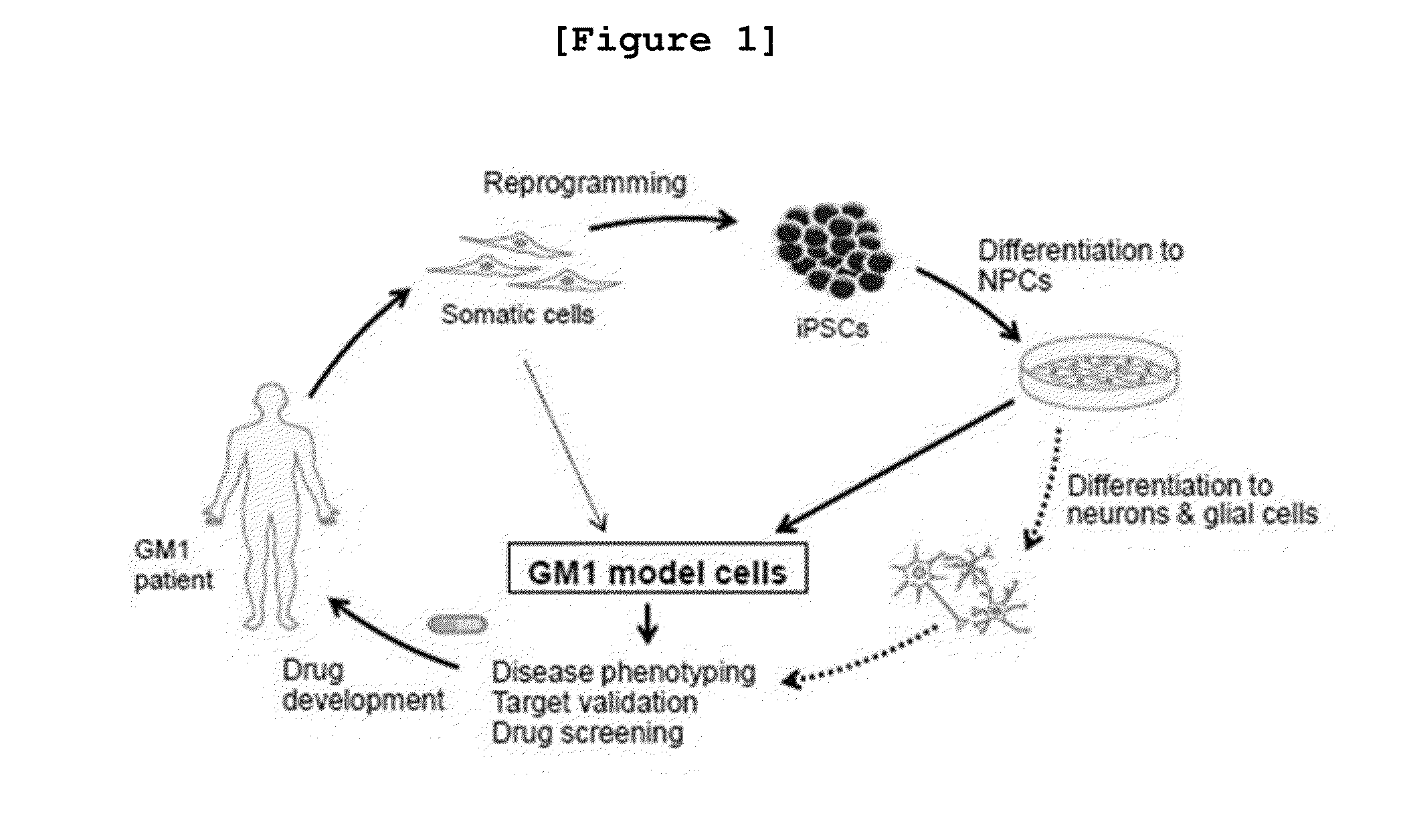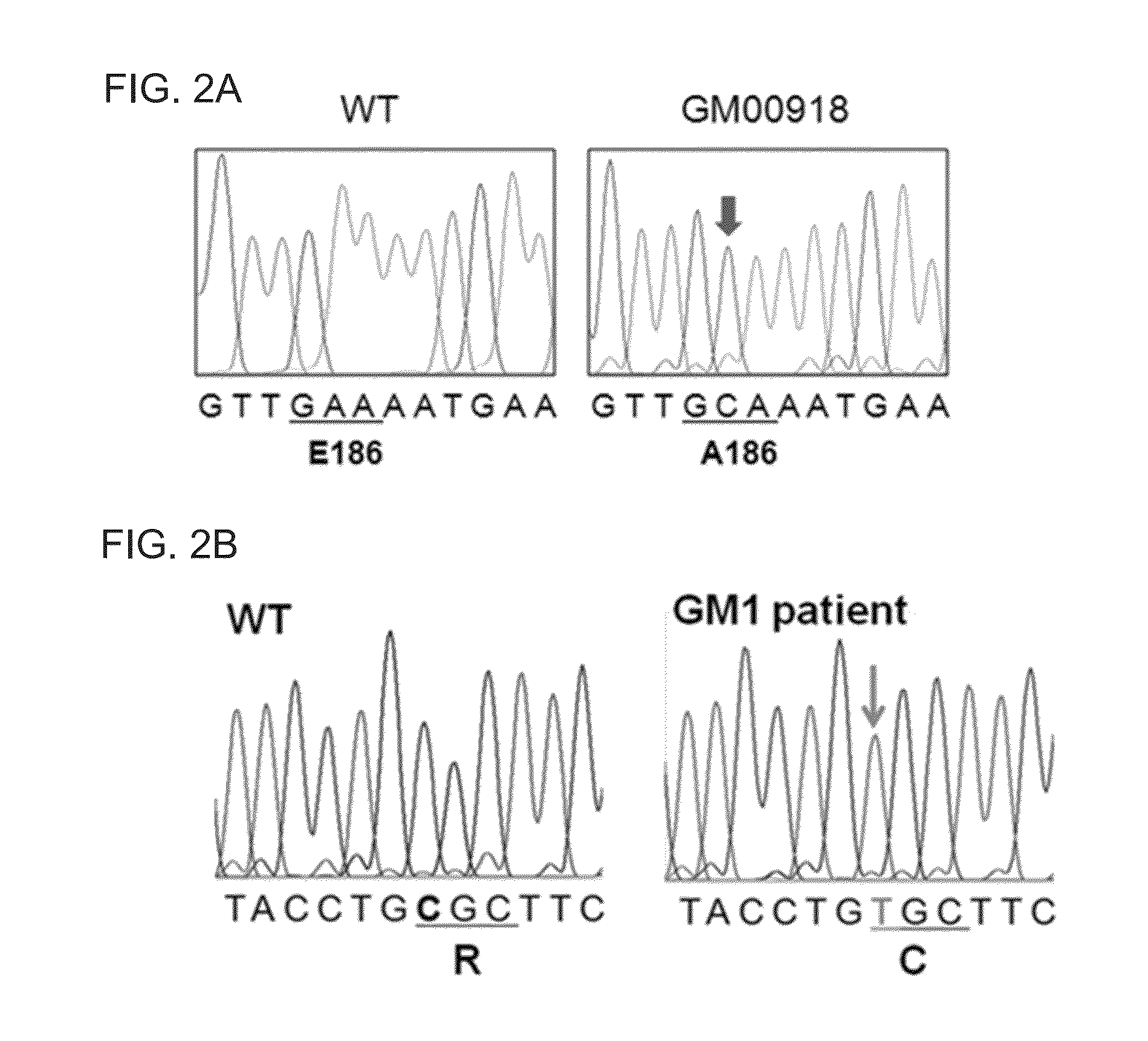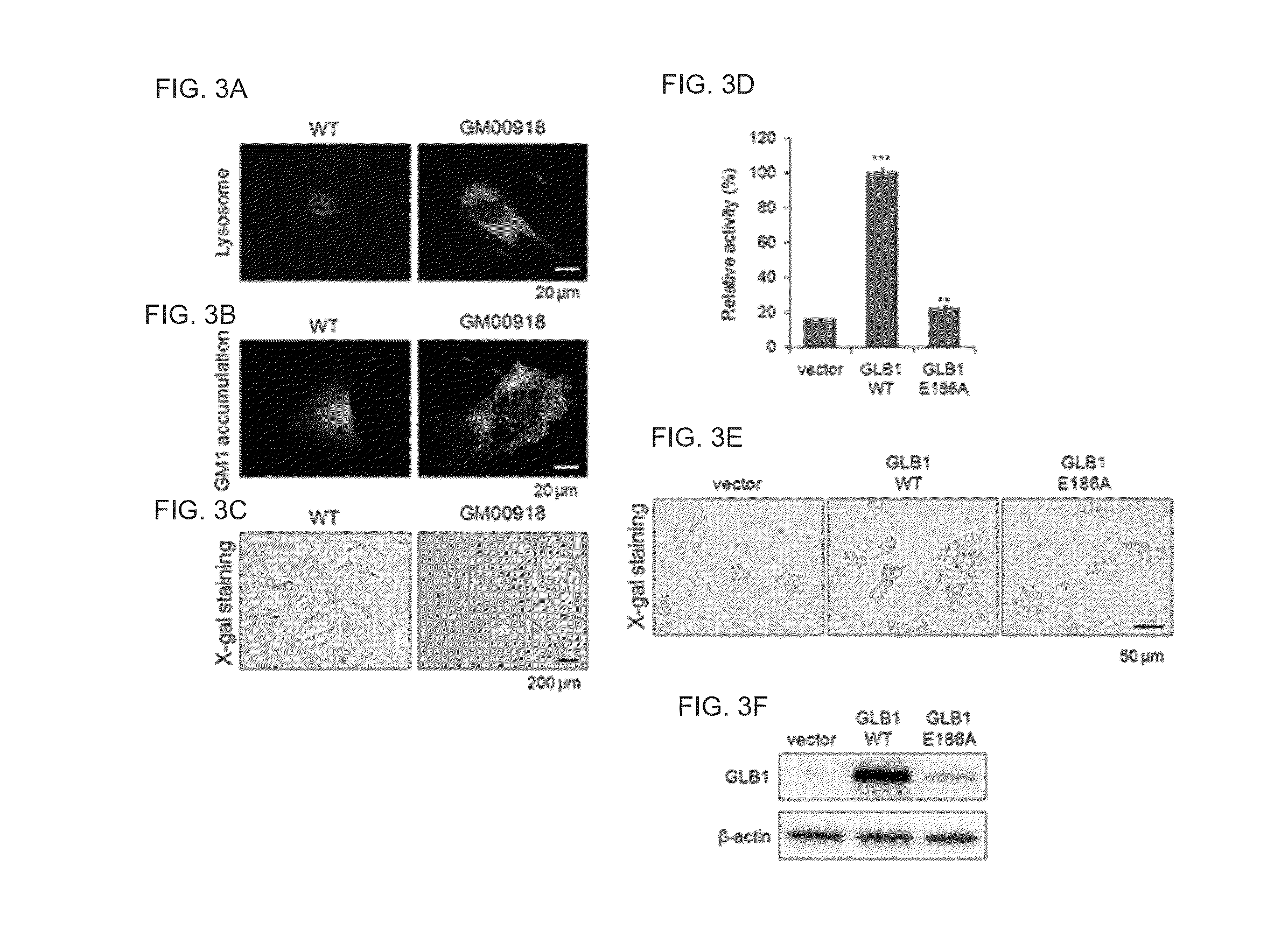Method for treatment of gm1 gangliosidosis
- Summary
- Abstract
- Description
- Claims
- Application Information
AI Technical Summary
Benefits of technology
Problems solved by technology
Method used
Image
Examples
example 1
Investigation of the Characteristics of GM1 Gangliosidosis (GM1) Cells
Confirmation of Novel Gene Mutation in GM1 Cells
[0234]To investigate the GM1 causing gene mutation, the fibroblasts originated from GM1 gangliosidosis patient were cultured, followed by sequencing of GLB1 that is the causing gene of GM1 gangliosidosis.
[0235]Particularly, the fibroblast cell lines originated from GM1 gangliosidosis patients (GM00918, GM02439, GM03589, GM05335, GM05652, GM05653, GM10919, and GM12369) were first purchased from Coriell Institute for Medical Research, USA. GM00918, GM03589, GM05335, GM05652, GM05653, GM10919, and GM12369 cell lines were originated from those patients diagnosed in early childhood, and GM02439 cell line was originated from the patient diagnosed in adolescence (http: / / ccr.coriell.org). Each cell line was cultured in DMEM (Dulbecco's modified Eagle's medium) supplemented with 10% fetal bovine serum (FBS; Invitrogen, USA), 1% non-essential amino acids (NEAA; Invitrogen, US...
example 2
Preparation of GM1 Originated Induced Pluripotent Stem Cells (iPSCs)
[0249]To execute the example of the invention, the inventors constructed iPSCs having pluripotency from GM1 patient fibroblasts (GM1-iPSCs) through the reprogramming culture using retrovirus expressing four reprogramming factors such as OCT4, SOX2, C-MYC, and KLF4 (Son M Y et. al, Stem cells 31, 2375-2387; 2013) (FIG. 5).
[0250]Particularly, GM02439, the GM1 patient originated fibroblast cell line confirmed with mutant gene in Example was transfected with retrovirus encoding OCT4, SOX2, C-MYC, and KLF4, followed by culture in somatic cell medium for 5 days. 5 days later, the infected cells were transferred onto the matrigel-coated plate containing human embryonic stem cell culture medium (hESCs-CM), followed by additional culture for 2˜3 weeks. Then, iPSC colonies were collected. GLB1 gene cDNA was synthesized from the obtained GM1-iPSCs by the same manner as described in Example , followed by sequencing. For the co...
example 3
Investigation of the Characteristics of GM1 Originated iPSCs
[0252] Investigation of the Morphological Characteristics of GM1-iPSCs
[0253]To investigate the morphological characteristics of GM1-iPSCs, the colony type and karyotype of GM1-iPSCs were investigated, followed by short tandem repeat (STR) analysis.
[0254]Particularly, reprogramming of GM1-iPSCs was induced by the same manner as described in Example 2, and then the morphology of GM1-iPSCs colony formation was observed by phase-contrast microscopy. The present inventors asked GenDix Inc. (Korea) to perform karyotype analysis by chromosomal G-banding analysis. In addition, the inventors also asked HumanPass Inc. (Korea) to perform STR genotyping with GM1 originated fibroblast cell line (GM02439) and GM1-iPSCs, and the results were compared with the normal human embryonic stem cell line H9 hESCs.
[0255]As a result, as shown in FIGS. 7˜9, GM1-iPSCs having pluripotency were successfully induced from GM1-fibroblast cell line (FIG. 8...
PUM
| Property | Measurement | Unit |
|---|---|---|
| Morphology | aaaaa | aaaaa |
Abstract
Description
Claims
Application Information
 Login to View More
Login to View More - R&D
- Intellectual Property
- Life Sciences
- Materials
- Tech Scout
- Unparalleled Data Quality
- Higher Quality Content
- 60% Fewer Hallucinations
Browse by: Latest US Patents, China's latest patents, Technical Efficacy Thesaurus, Application Domain, Technology Topic, Popular Technical Reports.
© 2025 PatSnap. All rights reserved.Legal|Privacy policy|Modern Slavery Act Transparency Statement|Sitemap|About US| Contact US: help@patsnap.com



